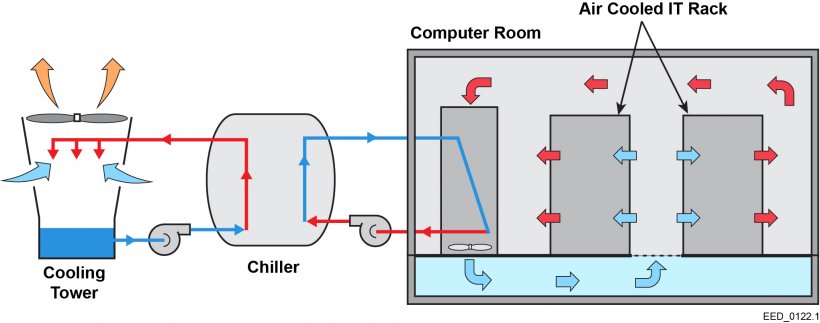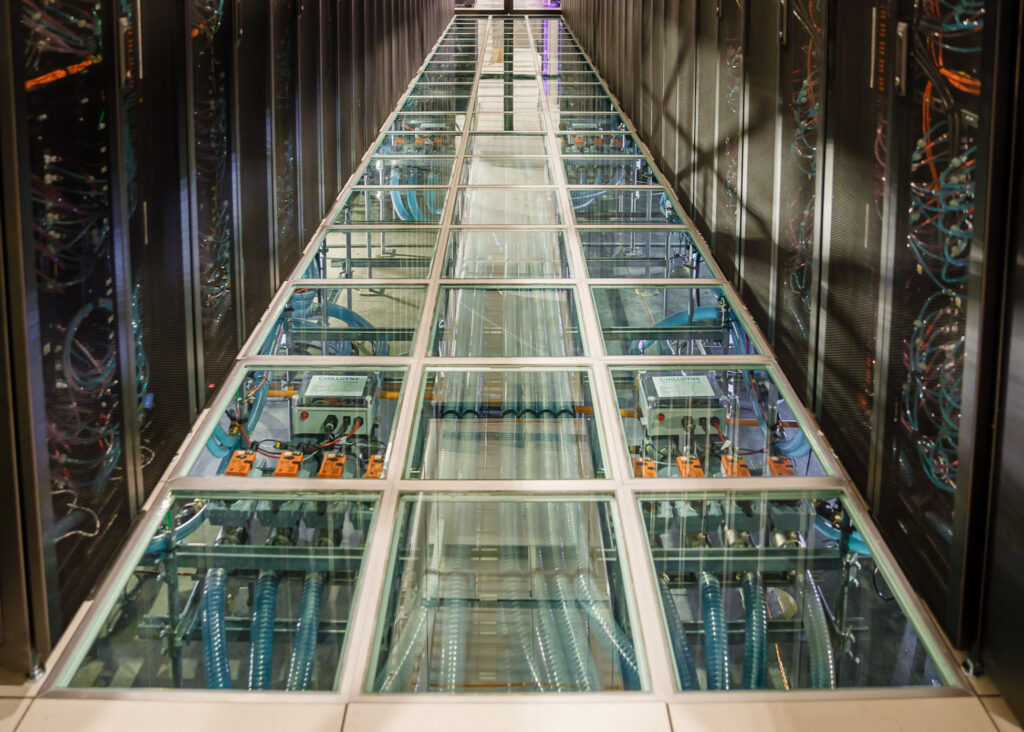A Tsunami of Data
Have you ever taken 10+ adorable photos of your pet (from multiple angles, of course)? Isn’t it convenient that mapping apps remember the location of that restaurant you really enjoyed last Saturday? Have you saved old emails “just in case”? If your answers to these questions are ‘yes’, it is likely you have also been enticed to pay fees to expand your data storage rather than lose these precious pieces of your digital life.
Our demand for data storage has risen dramatically and will only continue to grow as we rely on the conveniences of our phones, smartwatches, and computers. Along with the increased storage of photos, grocery lists, emails, and various digital flotsam, so, too, has there been a growth in demand for the data centers and the requisite land, energy, and water necessary to store the data. At the same time, many of the western locations where data centers are springing up, such as Colorado, Arizona, Nevada, and Texas, face multi-faceted climate-crisis issues such as increased temperatures and ongoing drought.
“Most of us operate on autopilot, storing what is essentially meaningless data,” said Sarah Young, Assistant General Manager for Planning, Engineering, and Technology for Aurora Water in Colorado. “And that practice is resource intensive, including the water supply that is used to cool data centers. We’ve recently received multiple large land use requests to put data centers on undeveloped land. But the data centers will, of course, have huge requirements for water, power, and infrastructure.”

Growth of the Data Center Industry
According to CloudScene and the United States International Trade Commission, as of January 2021, there were as many as 8000 data centers positioned in 110 countries around the world. This figure includes the Reno/Tahoe region, where one such data center, the Switch Citadel Campus, opened in 2017.
Boasting 7 million gross square feet (2000 acres), the 130-megawatt Switch facility is hyped as a technology fortress, with its own security and fire response systems. The Reno/Tahoe center forms a key fourth position in a “Switch Superloop,” providing 4.5-millisecond computational connections and linking our region to San Francisco, Las Vegas, and Los Angeles.
“There’s a growing need for data centers, especially as more people work from home,” said Shelby Noble, a managing director at Piper Sandler Investment Bank and formerly focused on real estate investment trusts for data centers.
There are also the ‘Five 9s of redundancy,’ Nobel explained. Data centers are now expected to be redundant (storing data in multiple locations) and be at least 99.999% functional, even when threatened by power failures, hurricanes, earthquakes, floods, war, social unrest, and other natural and social disasters. Data centers must ensure enduring data safety, “so that there’s no loss of access,” Nobel explained. “Our need for data storage, and for a high-speed transfer of data, simply will not diminish.”

Energy Hungry and Water Thirsty
To meet the exponential increase in demand, data centers are running non-stop, at full power. The Department of Energy estimates that data centers consume 10 to 50 times the energy per floor space of a typical commercial office building, using as much as 2% of the nation’s electricity.
The water use, although less recognized, is also impressive. Data Centers depend on hundreds of millions of gallons of water per day to cool the computers.
“They are just huge water users in a part of the world that is already dealing with the problem of drought,” said Young. “And it will only get worse as climate change issues become more prominent.”

Digital Needs on the Horizon
Not surprisingly, the digital economy is only expected to grow. In addition to cloud computing, streaming services, and e-commerce, we are now embracing (or bracing for) the mainstream emergence of artificial intelligence (AI), 5-G technology, and edge computing.
“AI… I don’t understand a lot of it, but it will be a data and energy hog,” said Mark Witkiewicz, a Principal at Westside Investment Partners who has worked on community planning projects.
Just as a displacement of geological plates give a tsunami its power, AI is likely to disrupt cross-currents of data center demand that we are already swimming in.
On the other hand, some see AI as an opportunity to lean into new technologies, including adopting innovative storage methods, developing water recycling technologies and underwater data centers for cooling, and incorporating sustainable energy sources such as solar, wind, and geothermal energy.
“Imagine the 1970s,” said Witkiewicz. “Your phone storage would have required a football-field sized space of a data center. But now, microprocessors make our data storage more manageable. Technology is changing so fast that it’s hard to imagine what the technology will look like in 10 years.”

Digital Decisions
Can we innovate to meet these ever-growing needs and address pressing environmental issues? Maybe. What seems to be missing from these hopeful conversations, however, is the possible addition of behavioral changes that would alter our data demand. Do we need to store 10+ photos of our Saturday night dinner plates (from multiple angles, of course), with no loss of access, in perpetuity?
“Sometimes data centers feel like landfills of useless shampoo bottles that need to be air conditioned, but that we’re unlikely to ever use again,” said Young. “And it seems like it will inevitably get worse because of business models that rely on our laziness.”
If we understood the current connection with energy and water usage, perhaps we would make different digital decisions. It’s not always easy to see the connection between our pet photos and the climate crisis, but it is there.
Jamie Voyles, Ph.D., is an associate professor in Biology at UNR, and director of the Voyles Lab. She wrote this story for the Hitchcock Project’s Science Communication Masterclass in fall 2023






